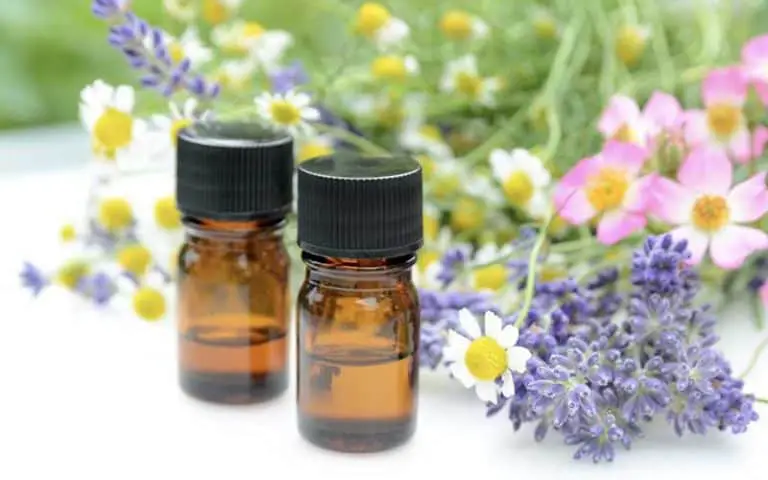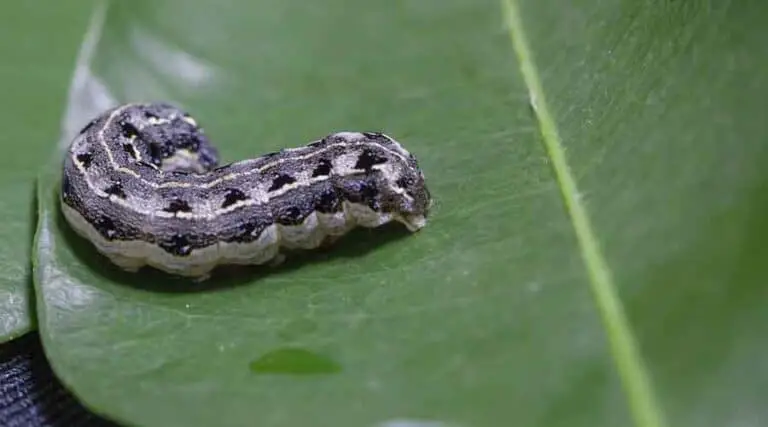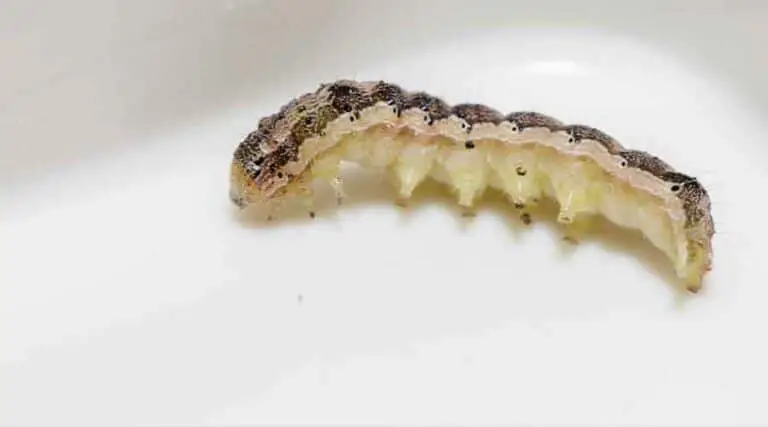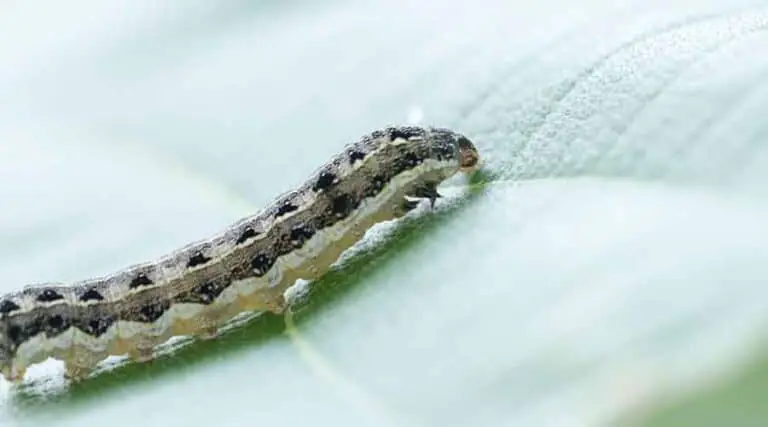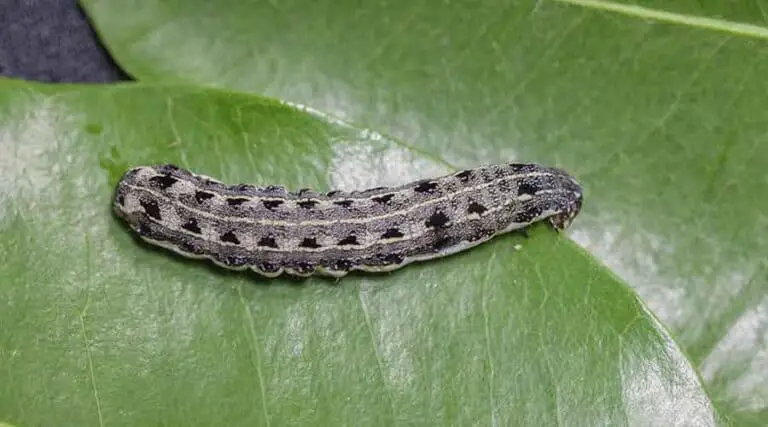Does Sevin Kill Cutworms? An Effective Control Method
Cutworms are notorious pests that can wreak havoc on plants by cutting them off at the soil level. These caterpillars can be a major concern for gardeners and farmers alike, as they feed on a wide range of plants. To effectively protect crops from these destructive pests, it’s essential to find an efficient and reliable control method. One possible solution is the use of a pesticide called Sevin.
Sevin, a carbamate insecticide, has a long history of use in controlling various insect pests. Although it is not specifically labeled for cutworm control, numerous studies have demonstrated its efficacy against these pests. For example, Sevin has been found to be effective in controlling both western bean cutworms in field beans and climbing cutworms on grapes. These results suggest that Sevin could be a potent weapon in the battle against cutworm infestations.
However, it’s crucial to consider factors such as application methods, rates, and potential toxicities to ensure the safe and effective use of Sevin in controlling cutworms. By understanding its usefulness and limitations, gardeners and farmers can make informed decisions on the best approach to managing these destructive pests.
What Are Cutworms
Cutworms are the larvae of various species of nocturnal moths. They are called cutworms because they have a tendency to cut the stems of seedling plants while feeding, causing damage to various crops. Cutworms are a common problem for home gardeners and agricultural producers alike.
Life Cycle
The life cycle of cutworms consists of four stages: egg, larva, pupa, and adult. The female moth lays eggs on plant debris or in the soil near the host plants. After a few days, the eggs hatch into larvae, which are the destructive cutworms. These caterpillars feed on the plants, usually at the base of the stem, for several weeks before pupating in the soil. The adult moths emerge, mate, and lay eggs to continue the cycle.
- Egg stage: lasting a few days
- Larva stage: consisting of the destructive cutworms, feeding for several weeks
- Pupa stage: occurring in the soil
- Adult stage: moths responsible for reproduction
Damage to Plants
Cutworms can cause significant damage to a variety of plants, including vegetables, flowers, and grass. Their primary method of feeding is cutting the stems of seedlings and young plants at or just below the soil surface. This can result in the death of the plant, as it is unable to transport water and nutrients.
In addition to cutting off stems, cutworms may also bore into the stems of larger plants, causing further damage. Crops that are particularly susceptible to cutworm damage include corn, tomatoes, and lettuce. The best way to protect your plants from cutworm damage is through early detection and proper control measures, such as using Sevin.
It has been shown that Sevin can be effective in controlling cutworm species, such as the climbing cutworms that attack grapes. Sevin has proven to be an efficient method in pest control, including the mitigation of cutworm infestations.
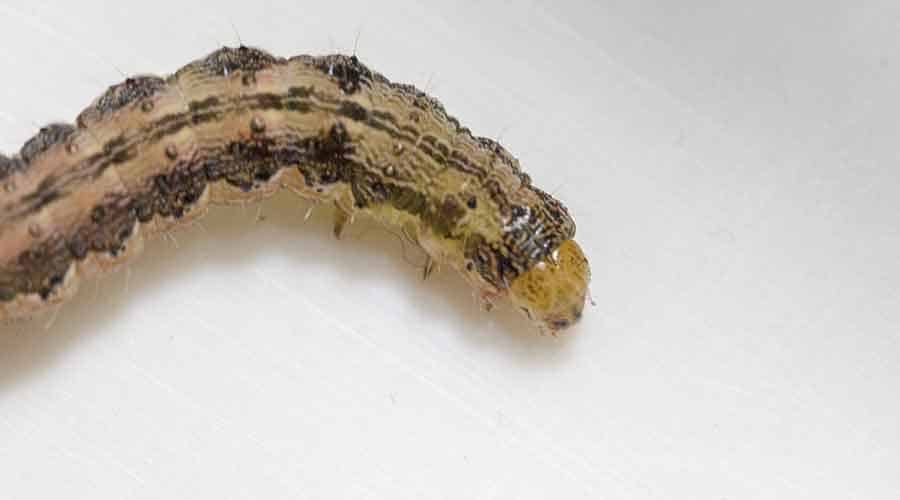
Sevin Insecticide
Sevin is a widely used synthetic insecticide to combat various pests, including cutworms. It has been proven effective in different studies and applications, which is why it is a popular choice for many individuals and professionals in pest control.
Active Ingredient
Sevin insecticide’s main active ingredient is carbaryl, a chemical compound that belongs to the carbamate group of pesticides. Carbaryl works by interfering with the nervous system of insects, effectively inhibiting their ability to transmit nerve impulses. This mode of action eventually leads to the death of the pests, such as cutworms.
Application Methods
There are a few primary methods for applying Sevin insecticide to control cutworms:
- Granules: Sevin granules can be evenly spread on the soil around the plants to target cutworms. This method helps provide protection to plant roots and stems since cutworms typically feed on these parts. Granules can be watered in or incorporated into the soil. As shown in a study, Sevin 7 G, a granular formulation, has been effective in controlling black cutworms on bentgrass golf greens.
- Dust or Powder: Carbaryl in its dust or powder form can be applied directly on the plants, targeting the cutworms’ feeding areas. This method can work well for smaller areas or in home gardens. Ensure even coverage without over-applying for best results.
- Spray: Sevin insecticide can also be applied as a spray solution. This method proves useful for larger areas or when cutworms are present on the various host plants, as confirmed in a research. Mixing Sevin with water and using a garden sprayer, the solution can be thoroughly applied to plant surfaces. Timing the application in the evening can help target the cutworms during their active feeding time.
Remember to always follow the manufacturer’s instructions for mixing ratios, safety precautions, and re-application intervals for the most effective control of cutworms using Sevin insecticide.
Effectiveness of Sevin on Cutworms
Kill Rate
Sevin is a chemical pesticide, which has been found effective against cutworm infestations in various crop types. Studies have reported that Sevin can significantly reduce cutworm populations in treated areas. For instance, a study conducted on black cutworms in bentgrass indicated that Sevin provided comparable control alongside other effective insecticides.
In another research, Sevin’s efficacy was observed in grape treatment against climbing cutworm species. The findings show that the pesticide helped mitigate these early-season pests in grapevines.
Residual Control
While Sevin displays effectiveness against cutworms, it’s essential to consider its residual control. In the case of soil treatment with chlorpyrifos for control of first instar grape root borers, Sevin exhibited a lower efficacy after two days post-treatment. This suggests that Sevin might not provide lasting control of cutworm infestations, requiring repeated applications to maintain its effectiveness.
However, it’s worth mentioning that the effectiveness of Sevin and its residual control may depend on factors such as the specific cutworm species, the crop being treated, and environmental conditions. Therefore, it’s crucial to adapt pest management strategies accordingly to achieve optimal results.

Precautions and Safety
Environmental Impact
Sevin, a commonly used pesticide for controlling cutworms, can have potential negative effects on the environment. Non-target insects, such as bees and other pollinators, can be adversely affected by the application of Sevin. It is essential to follow the label instructions and apply Sevin only in the recommended amounts and at the appropriate times to minimize its environmental impact.
Additionally, Sevin is known to be toxic to aquatic organisms, so precautions must be taken to avoid contamination of water sources. This can be achieved by avoiding the application of Sevin near bodies of water and ensuring proper disposal of any leftover pesticide residue.
Health Concerns
When using Sevin or any other pesticide, it is crucial to take necessary precautions to protect your health. Always read and follow the label instructions for proper handling, application, and disposal. Personal protective equipment, such as gloves, goggles, and long-sleeved clothing, should be worn during the handling and application process to minimize exposure to the pesticide.
Symptoms of Sevin exposure can include dizziness, headache, nausea, and skin irritation. If you suspect that you have been exposed to Sevin and are experiencing any of these symptoms, seek medical attention immediately. It is also essential to keep Sevin out of the reach of children and pets, as its ingestion can cause severe health problems or even be fatal.
By adhering to the recommended guidelines and taking the necessary precautions, Sevin can be an effective tool in controlling cutworm populations, without posing significant risks to the environment or human health.
Alternative Methods to Control Cutworms
Cultural Practices
One effective way to minimize the impact of cutworms on your plants is through cultural practices. Some of the recommended techniques include:
- Crop rotation: Changing the type of crop planted in a specific area can disrupt the life cycle of cutworms and decrease their population.
- Tillage: Tilling the soil exposes cutworm larvae to natural predators and harsh environmental conditions, reducing their numbers.
- Soil inspection: Regularly checking the soil around your plants for cutworms can help with early detection and removal.
- Removing plant debris: Keeping the area around your plants clean and free from plant debris can deprive cutworms of hiding places and food sources during their growth.
Biological Control
A more sustainable and environmentally friendly approach to controlling cutworms is through biological control. There are several organisms that can help reduce cutworm populations, including:
- Predators: Birds, ground beetles, and other insects can prey on cutworms, helping to reduce their numbers naturally.
- Parasitoids: Certain wasps and flies can lay their eggs inside cutworms, eventually leading to the death of the host cutworm.
- Microbial control agents: Bacillus thuringiensis (Bt) is a bacterium that produces toxins lethal for cutworms when ingested. This can be used as a biological insecticide and is safe for humans, animals, and the environment.
By implementing these alternative methods, it is possible to control cutworm populations without relying solely on chemical insecticides such as Sevin.

